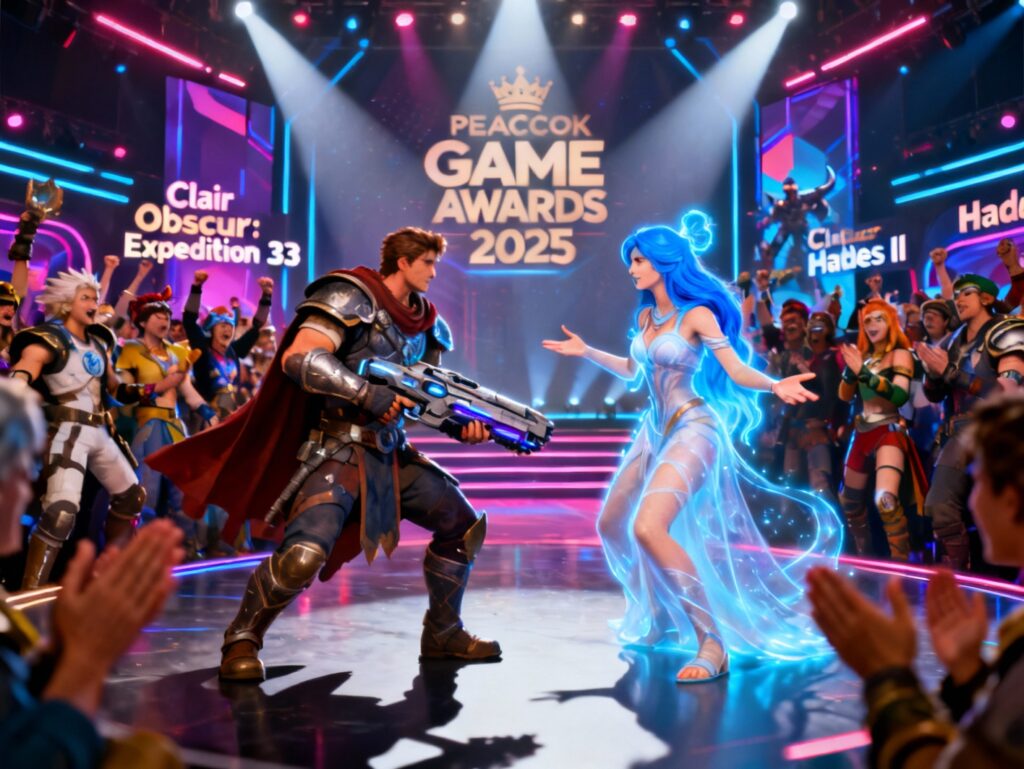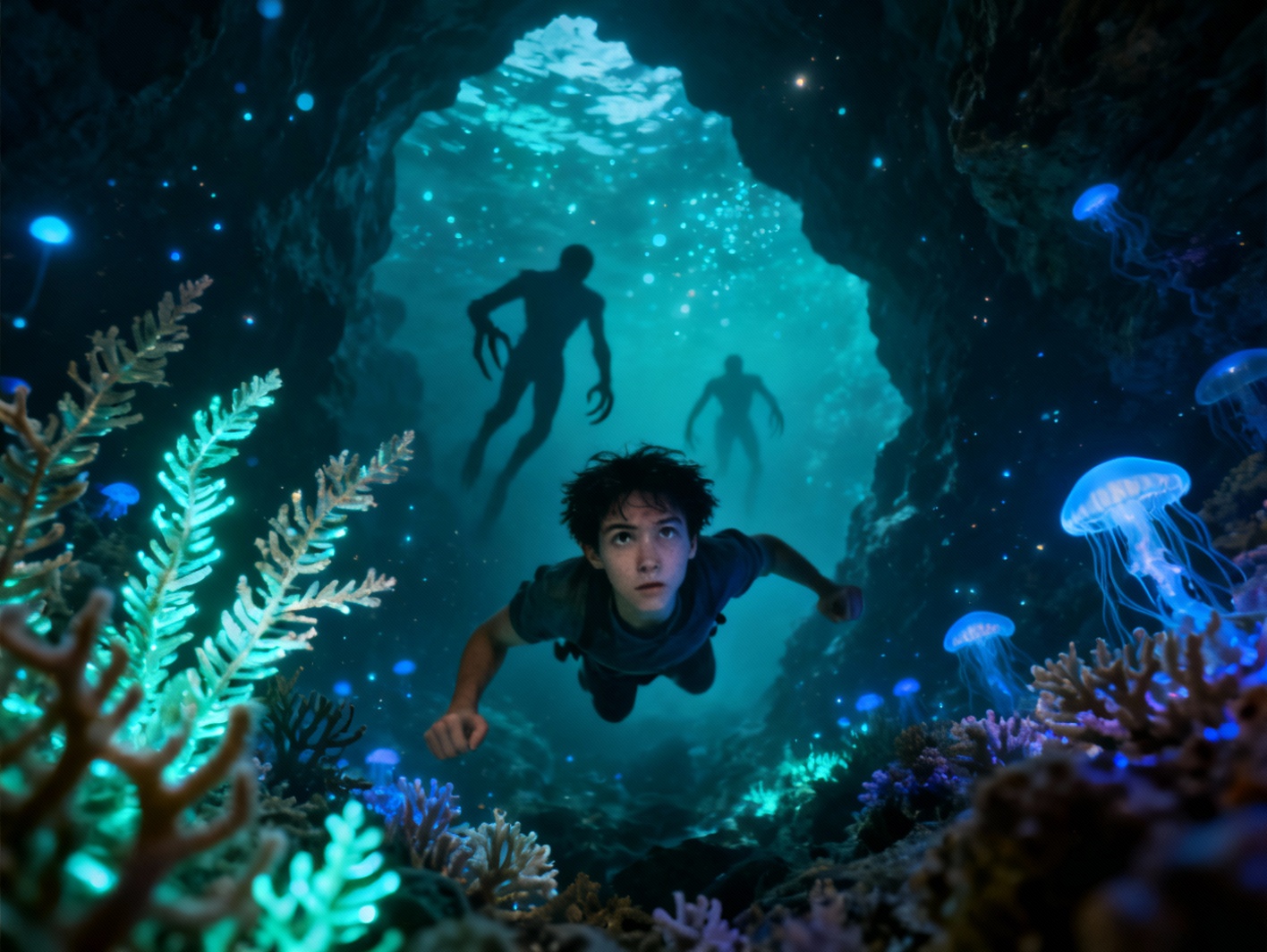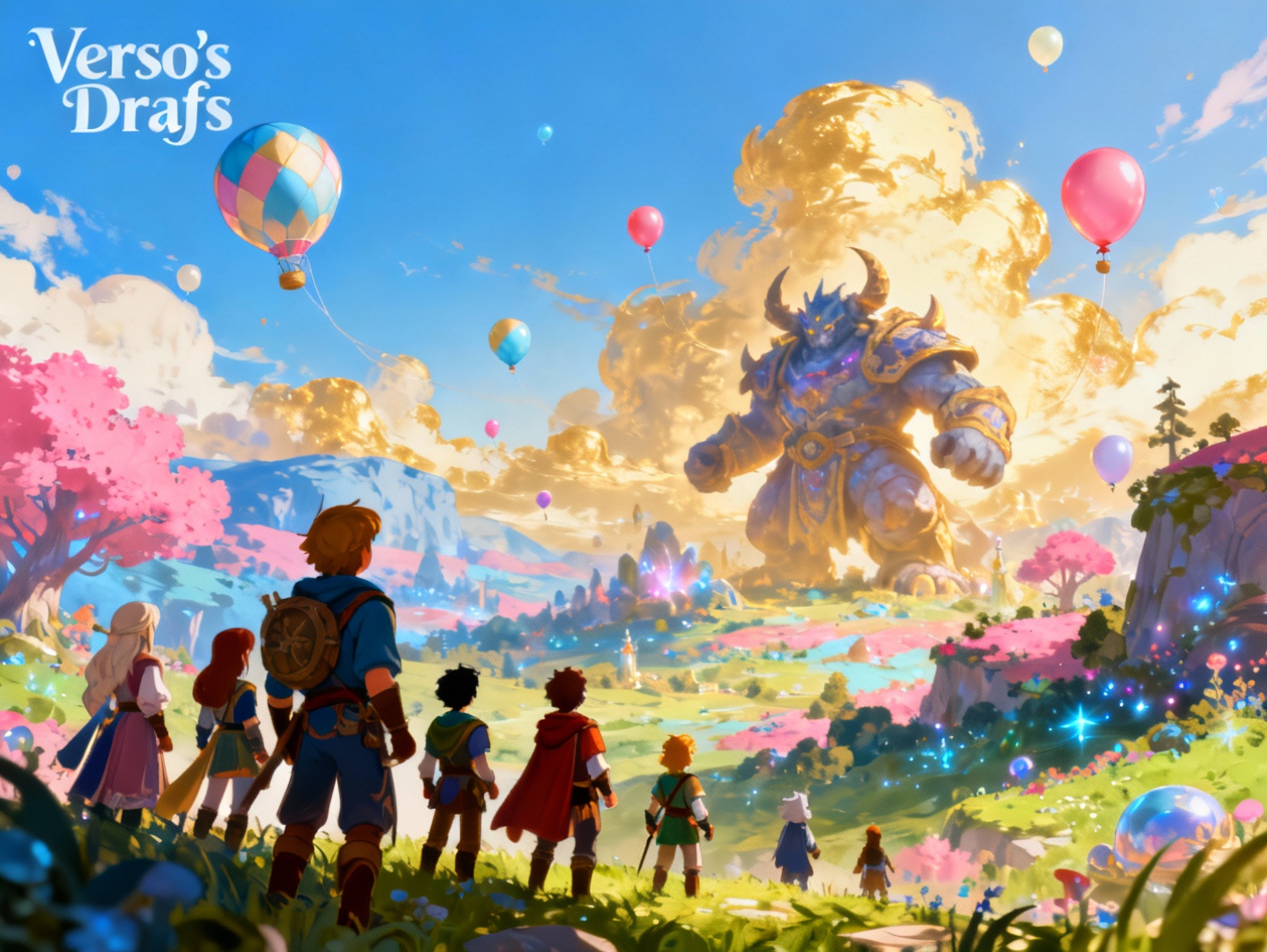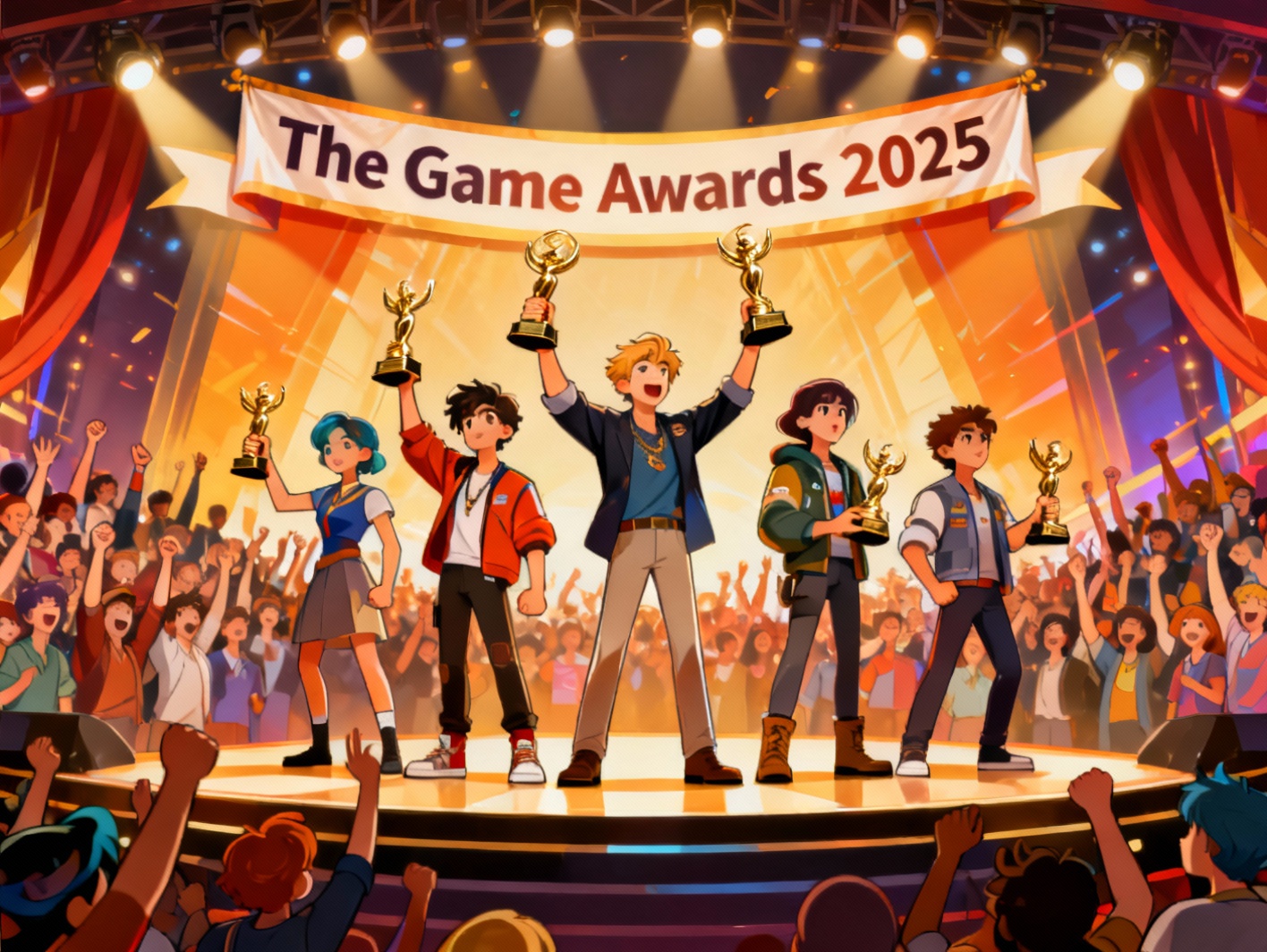
Table of Contents
The Game Awards 2025, taking place on December 11 at Los Angeles’ iconic Peacock Theater, sets the stage for honoring the most influential game titles of the year. With the independent game Clair Obscur: Expedition 33 leading the nominees list with an impressive 12 nods, this year’s ceremony clearly signals a shift in the industry’s values and expectations. In a gaming landscape that continues to diversify, fans are being given a louder voice through public voting, open until December 10. This year’s awards don’t just celebrate accomplishments—they reflect a transformative period in gaming history, driven by bold narratives, innovation, and community engagement.
A Historic Year for Indie Games
Independent games have often been relegated to niche categories in major gaming award ceremonies. However, The Game Awards 2025 has rewritten the script. The sweeping recognition of indie titles—led by Clair Obscur: Expedition 33‘s nomination for Game of the Year—marks a turning point in how the industry perceives creative innovation. No longer are budget and studio size the primary determinants of prestige. The rise of indie games reflects the maturing tastes of gamers who increasingly value storytelling, originality, and emotional resonance over sheer production value.
Several factors have led to this shift. First, the democratization of development tools has enabled small teams to create high-quality experiences. Advanced engines like Unreal 5 are more accessible than ever. Crowdfunding and early-access platforms allow creators to test concepts directly with enthusiastic supporters. Second, the growing influence of social media and streaming has given indie games visibility that once required massive marketing budgets. When titles like Hades or Celeste previously broke barriers, they paved the way for games like Clair Obscur to thrive.
This emerging recognition reshapes the industry’s power structures. Publishers are watching these trends closely, reconsidering how they fund and support small studios. Meanwhile, established developers must compete with agile independent teams that can innovate quickly without corporate constraints. The industry’s future may very well be defined by this balance between corporate resources and indie creativity.
Spotlight on ‘Clair Obscur: Expedition 33’
Clair Obscur: Expedition 33 didn’t just capture attention—it unleashed a wave. Developed by rising studio Datura Forge, the game’s journey from concept to 12-time nominee sets a new benchmark. Described as a surrealist narrative RPG, Clair Obscur blends compelling visual design with profound thematic storytelling, rooted in metaphysical conflict and psychological exploration. The game’s striking hand-painted aesthetic, reminiscent of impressionist art, creates a powerful visual identity that differentiates it from any AAA counterpart.
What truly cements its legacy is how it combines artistic narrative with precise gameplay. Drawing from the playbook of classic turn-based combat systems, it introduces innovation via rhythm-based input mechanics that demand both strategy and timing. Its worldbuilding fragments convention, offering players an ever-shifting dreamscape where decisions heavily impact progression. Consistent with its name, ‘Clair Obscur’ plays with light and darkness—toying with literal weather systems and emotional tones alike.
Critically, reviewers have hailed the game for its emotional impact. Characters aren’t just written well—they evolve in consequence to choices. Voices performed by a mix of seasoned actors and fresh talent bring authenticity to each line. Industry veterans have called it a reminder of what interactive storytelling can achieve at its peak. This level of artistry and polish from a relatively unknown studio has challenged how we define production quality. With 12 nominations, including Best Narrative and Best Game Direction, Clair Obscur isn’t simply a dark horse; it’s now a definitive icon.
Diverse Nominees Across Categories
The Game Awards 2025 features one of its most eclectic slates of nominees to date, showcasing a stunning diversity of genres, voices, and visions. In the Best Performance category, actors brought real depth to roles far beyond traditional expectations. Standouts include Ruth Negga’s quiet intensity in Echoes of Orpheus and the motion-captured brilliance of David Diggs in the action-epic Kingless Throne. Performances are no longer extras—they’re defining aspects of a game’s identity.
In Best Art Direction, aesthetics take center stage, with nominees ranging from the cyber-noir tapestries of Synthriver to the minimalist expressionism of Lineage of Dust. These selections reveal the vast creative spectrum the industry now embraces, where beauty is measured not just in fidelity but feeling. Clair Obscur, naturally, remains a strong contender, challenging artistic norms with its fusion of traditional art and real-time rendering techniques.
Meanwhile, Best Score and Music celebrates how audio shapes emotional and narrative layers. Whether it’s the haunting melodies of Spiritfall or neon-funk symphonies of Drive: Recharged, this year highlights soundtracks that elevate gameplay to immersive storytelling. These varied nominations illustrate gaming’s expansion from entertainment to full-fledged art form. The envelope-pushing spirit defining 2025 has not just showcased what games are—it’s started to redefine what they can be.
The Role of Public Voting
Public participation is more influential than ever at The Game Awards 2025 thanks to its open voting system, which invites fans worldwide to cast their votes until December 10. While expert juries weigh in on the technical and creative aspects, the voting portal places real impact in the hands of the community. This level of transparency fosters direct engagement, making fans feel not just like viewers, but contributors to gaming history.
By involving the audience in shaping outcomes, the awards gain authenticity and broaden inclusivity. It sends a powerful message that the collective voice of gamers matters in determining what excellence looks like. From indie advocacy movements to fan-driven campaigns, players are challenging traditional definitions and pushing lesser-known titles into the spotlight. In many cases, grassroots excitement can carry a nominee like Clair Obscur or Blightborne all the way to a win.
Audience voting also brings diversity into the conversation. Games that might be overlooked by industry insiders get a second chance through fan enthusiasm. As developers become more responsive to community feedback during development phases, this final layer of audience validation completes the cycle. Overall, the public vote bridges the gap between players and creators, creating an event whose outcomes reflect both craftsmanship and community values.
Anticipated Highlights of the Ceremony
Set against the gleaming backdrop of Los Angeles’ Peacock Theater, The Game Awards 2025 promises not just accolades but spectacle. One of the most anticipated segments is the presentation by the cast of Fallout Season 2, merging the worlds of television and gaming. With the show’s strong fanbase and lore-rich narrative, these moments cross boundaries and deepen fandom.
In addition to the honors and tributes, fans can expect surprise world premieres to ignite buzz for the year ahead. Industry insiders anticipate a new gameplay reveal from a secretive project by Kojima Productions, as well as updates on long-awaited entries like Dragon Age: Dreadwolf and Hollow Knight: Silksong. These moments become cultural milestones that ripple far beyond the ceremony itself.
Meanwhile, celebrity appearances and live music performances transform the stage into a celebration of creative convergence. The live interpretation of soundtracks—featuring orchestras and hybrid electric bands—gives players a rare glimpse into the musical minds behind their favorite titles. It’s not just a show; it’s a multimedia experience that embodies the artistic complexity of games today.
As industry leaders gather under one roof with fans watching from across the world, the ceremony isn’t just about recognition—it’s about possibility. It reflects gaming’s ascent as a premier cultural force, capable of unifying story, technology, and artistry in one unforgettable event.
The Future of Gaming Recognized
Beyond the glamour and awards, The Game Awards 2025 is a mirror reflecting the future of gaming. This year’s nominees offer a strong indication of where the industry is headed, from narrative-rich indie adventures to AI-powered gameplay systems. Developers are pushing technical boundaries not just in graphics, but in how games interact with players on an emotional and cognitive level.
Emerging trends spotlight the growing importance of dynamic storytelling, procedural generation, and cross-platform integration. Games are designed now with global communities in mind, incorporating real-time feedback and adaptive narratives. Innovations showcased in 2025 also include expanded applications of haptics and VR, which could soon turn emotional immersion into physical experience.
Another major development is the increasing diversity of voices in game narratives. With more accessible tools and platforms, creators from underrepresented regions and backgrounds are crafting stories never seen before in mainstream titles. These fresh perspectives are finding recognition alongside mega productions, rewriting the cultural architecture of gaming.
The blending of entertainment mediums is accelerating, with games influencing and transferring into film, TV, literature, and beyond. As interactive storytelling continues to redefine audience engagement, what we’ve seen at this year’s awards is just the beginning. The celebration of today’s excellence is also a bold invitation to what tomorrow’s games will become. The Game Awards has become more than an event—it’s a preview of the artistic revolutions ahead.
Conclusions
The Game Awards 2025 stands as a powerful reflection of gaming’s evolution, capturing how the industry is rapidly expanding beyond traditional boundaries. With independent games like Clair Obscur: Expedition 33 commanding top honors and a growing emphasis on community engagement and innovation, this year’s ceremony breaks new ground. It highlights the fact that creativity, vision, and inclusivity are as celebrated as technical excellence.
As we look ahead to the events of December 11, we aren’t just preparing for a list of winners—we’re witnessing a celebration that symbolizes where games are now and where they might go next. In every nominee, every vote, and every reveal, the message is clear: the future of gaming has never been more dynamic, diverse, or inspiring.










